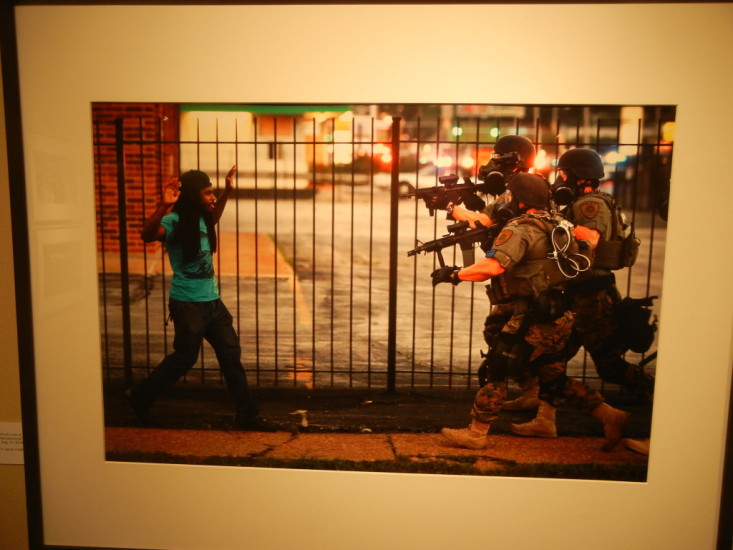©Time Inc. Courtesy Monroe Gallery
Via The Santa Fe Reporter
April 22, 2015
As a symbol for globetrotting photojournalism, Margaret Bourke-White’s brand in the field is still felt today. Born on June 14, 1904, in New York City, she soon would become a beacon for editorial photography, focusing on subjects both live and inanimate, and securing the first cover image for LIFE magazine—an iconic study of the dams in the Columbia River basin.
“There is so much to talk about Margaret Bourke-White,” Monroe Gallery of Photography’s Michelle Monroe muses. “Her vision directed LIFE. It was her global look at why things mattered; why the Russian Revolution was going to affect ours; why man’s industry and this sort of race toward that conclusion mattered; why humans in India who were trying to gain independence from Britain mattered to America. It was a really sophisticated worldview for that time.”
Monroe continues, “America was largely illiterate in 1936, and this woman met [LIFE editor] Henry Luce and was the first person hired for his magazine, which is also extraordinary—because she’s a girl,” she says, with a playfully scandalized tone.
The Don Gaspar gallery showcases 54 of Bourke-White’s emblematic images, starting this Friday and going through June 28.
Before her death of Parkinson’s disease in 1971, Bourke-White managed to stamp her unique perspective on historic events like Gandhi’s release from prison in 1946, the ripple of the South African labor exploitation during the 1950s and the liberation of German concentration camps by General Patton.
The breadth of Bourke-White’s oeuvre as well as her approach, Monroe stresses, far surpasses whatever labels one might want to stick on her based on gender.
“I try not to talk about ‘female artists’ or ‘female gallerists’ because that puts us in a kind of margin,” Monroe says. “You have to think that in 1936, it was extraordinary that this woman was hired as the first journalist in what would become Henry Luce’s magnum opus.”
“There is so much to talk about Margaret Bourke-White,” Monroe Gallery of Photography’s Michelle Monroe muses. “Her vision directed LIFE. It was her global look at why things mattered; why the Russian Revolution was going to affect ours; why man’s industry and this sort of race toward that conclusion mattered; why humans in India who were trying to gain independence from Britain mattered to America. It was a really sophisticated worldview for that time.”
Monroe continues, “America was largely illiterate in 1936, and this woman met [LIFE editor] Henry Luce and was the first person hired for his magazine, which is also extraordinary—because she’s a girl,” she says, with a playfully scandalized tone.
The Don Gaspar gallery showcases 54 of Bourke-White’s emblematic images, starting this Friday and going through June 28.
Before her death of Parkinson’s disease in 1971, Bourke-White managed to stamp her unique perspective on historic events like Gandhi’s release from prison in 1946, the ripple of the South African labor exploitation during the 1950s and the liberation of German concentration camps by General Patton.
The breadth of Bourke-White’s oeuvre as well as her approach, Monroe stresses, far surpasses whatever labels one might want to stick on her based on gender.
“I try not to talk about ‘female artists’ or ‘female gallerists’ because that puts us in a kind of margin,” Monroe says. “You have to think that in 1936, it was extraordinary that this woman was hired as the first journalist in what would become Henry Luce’s magnum opus.”
505 992 0800


